Key takeaways:
- Storytelling in advocacy fosters empathy, simplifies complex issues, and drives action by connecting personal narratives to broader societal challenges.
- Gender equality is crucial for individual empowerment, economic growth, and healthier communities, requiring collaborative efforts to dismantle systemic barriers.
- Effective storytelling techniques include character-driven narratives, creating urgency, and incorporating diverse perspectives to inspire collective action.
- Measuring storytelling’s impact through audience feedback and engagement metrics highlights its role in encouraging personal reflections and community discussions on equality.
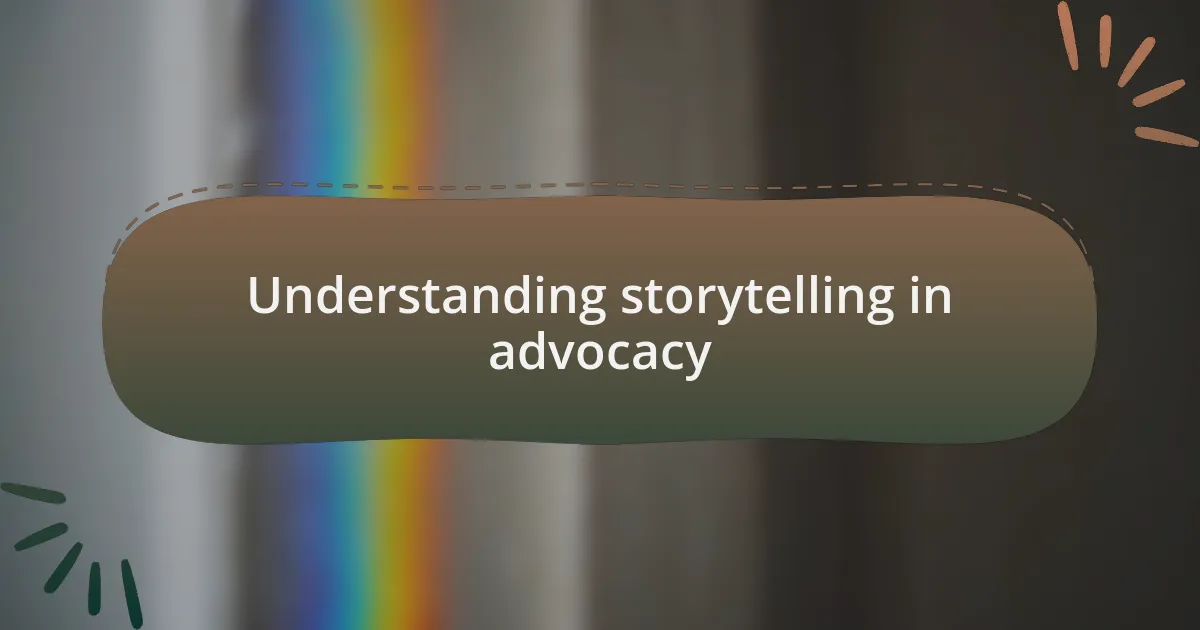
Understanding storytelling in advocacy
Storytelling in advocacy is a powerful tool that brings issues to life. I remember when I first shared a personal story about facing gender biases in my workplace. The way people visibly connected with my experience was eye-opening; it showed me that stories could foster empathy and drive action.
Consider this: why do we often remember the stories we hear rather than just the facts? It’s because stories activate emotions. When I told the story of a friend who struggled for equality in her community, it wasn’t just her narrative; it resonated with many who have experienced similar challenges, igniting a collective desire for change.
Moreover, effective storytelling can simplify complex issues. During a discussion about women’s representation in leadership, I used anecdotes from diverse backgrounds to illustrate the barriers women face. This approach not only made the statistics more relatable but also prompted my audience to think deeply about the implications of these barriers in their own lives. How can we leverage our personal stories to raise awareness and promote change? By sharing our experiences, we invite others into the conversation and empower them to take action.
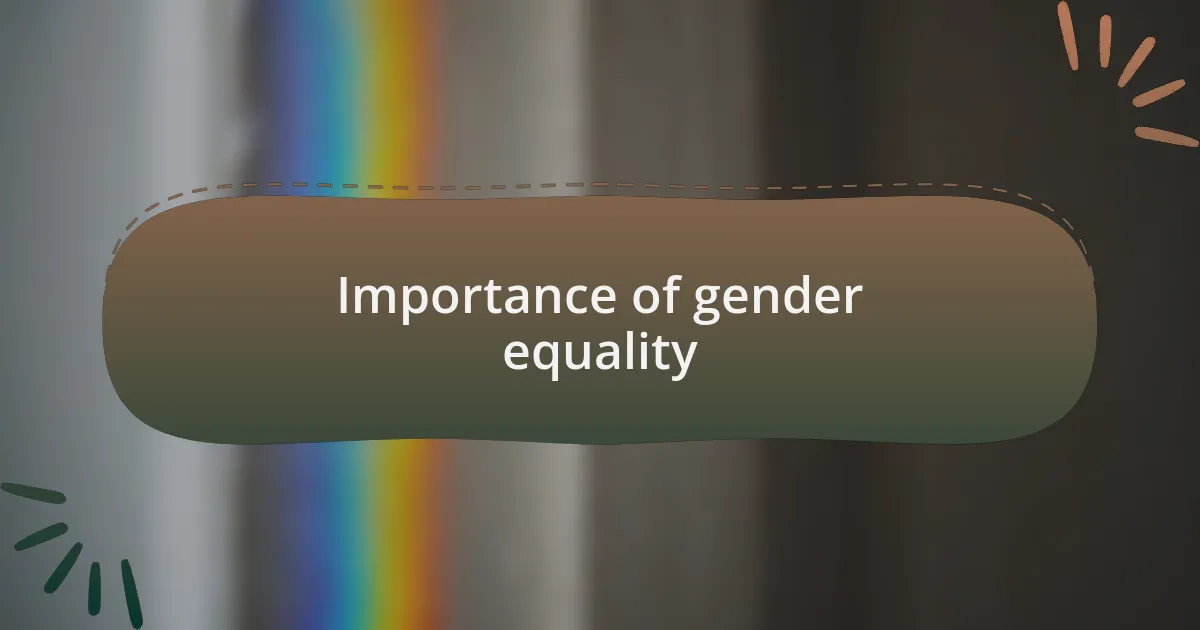
Importance of gender equality
Gender equality is essential not only for individual empowerment but also for societal progress. I recall participating in a community workshop where women shared their struggles for equal pay. Their stories revealed an uncomfortable truth: many faced systemic barriers that stifled their potential. It made me wonder, what if those barriers were dismantled? How much untapped talent could we discover?
The importance of gender equality also extends to the economic benefits that arise when women thrive. I once read a study showing that companies with gender-diverse leadership perform better financially. This insight struck me; it’s not just about fairness but about creating stronger, more innovative workplaces. Doesn’t it make you think about the missed opportunities when we fail to promote gender equality?
Moreover, achieving gender equality is crucial for fostering healthier communities. During a panel discussion, I listened to a mother discuss how her daughter’s self-esteem improved once she was exposed to positive female role models. It reminded me that representation matters; when young girls see diverse women in positions of power, they are inspired to dream bigger. What impact could we create if we consistently uplift and support each other? The potential is limitless.
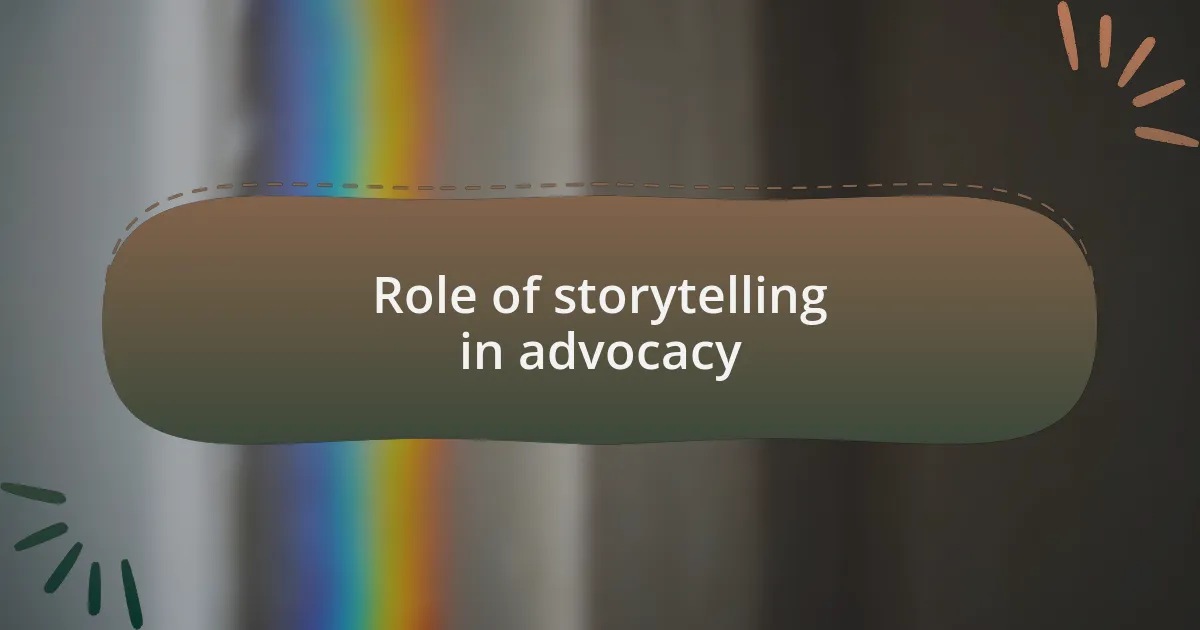
Role of storytelling in advocacy
Storytelling serves as a powerful tool in advocacy, as it connects us emotionally to the issues at hand. I remember attending a rally where a survivor shared her experience with gender-based violence. Her story cut through the noise and made the audience feel the weight of her struggle, reminding us that behind every statistic is a person with a profound journey. How can we ignore the human element when it resonates so deeply?
In my experience, effective storytelling has the ability to convey complex issues in a relatable way. I once watched a documentary featuring a young girl in a rural community fighting for her right to education. Her narrative was so vivid that it prompted many of us to reflect on our own privileges and responsibilities. Can stories like this inspire action and change? Absolutely; they can transform passive listeners into passionate advocates.
Additionally, stories forge a sense of community and solidarity. I recall participating in a storytelling workshop where we shared our own experiences related to gender equality. The sharing created bonds among us and reminded us that we are not alone in this fight. Isn’t it incredible how personal narratives can unite people across different backgrounds for a shared cause?
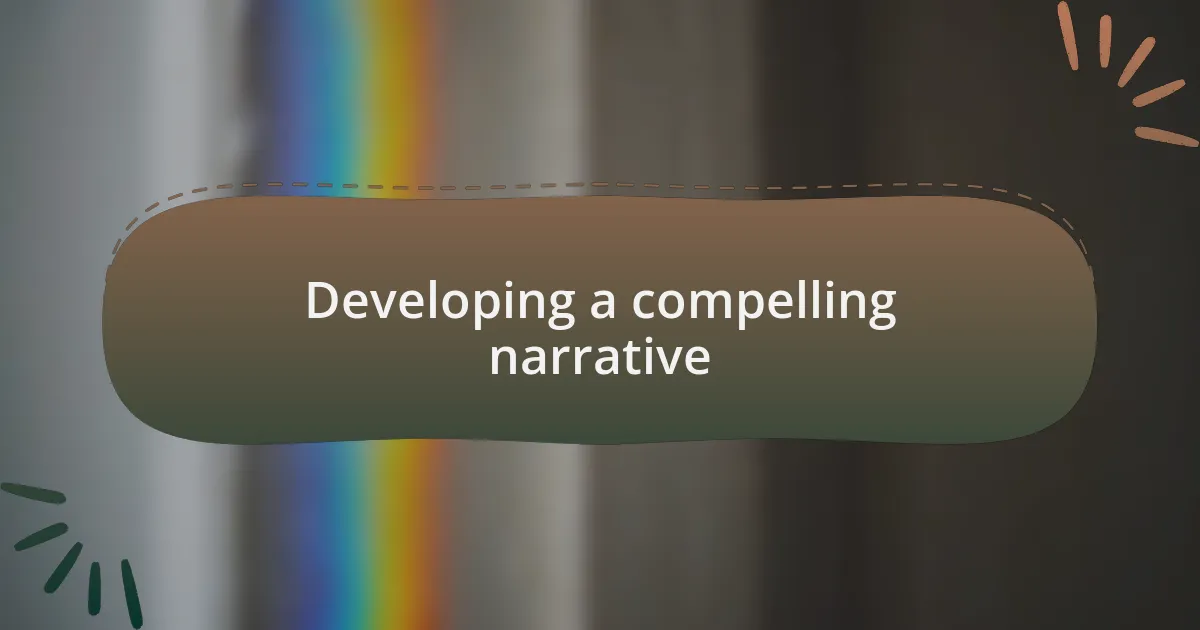
Developing a compelling narrative
When developing a compelling narrative, it’s crucial to identify the core message you want to convey. I remember crafting a campaign about women’s leadership, where we highlighted the achievements of everyday women in various sectors. By focusing on their struggles and triumphs, we turned abstract concepts of empowerment into relatable stories that resonated with our audience. Have you ever felt inspired by someone’s journey? It’s this connection that makes narratives impactful.
One technique that has worked wonders for me is using vivid imagery to paint a picture in the minds of listeners. I once shared the story of a woman overcoming barriers to start her own business, describing not just her success but the hurdles she faced along the way. The details — like the nights spent working in a dimly lit room — brought her challenges to life. How can such imagery not make the audience feel every ounce of her determination?
It’s also important to weave an emotional thread throughout your narrative. During a community event, I shared my personal struggles with gender bias in the workplace, exposing vulnerabilities that many could relate to. The air was thick with empathy, and I found that openness not only fostered understanding but also sparked dialogue. Isn’t it fascinating how revealing our stories can create spaces for others to share their own? That’s the essence of a compelling narrative in advocacy.
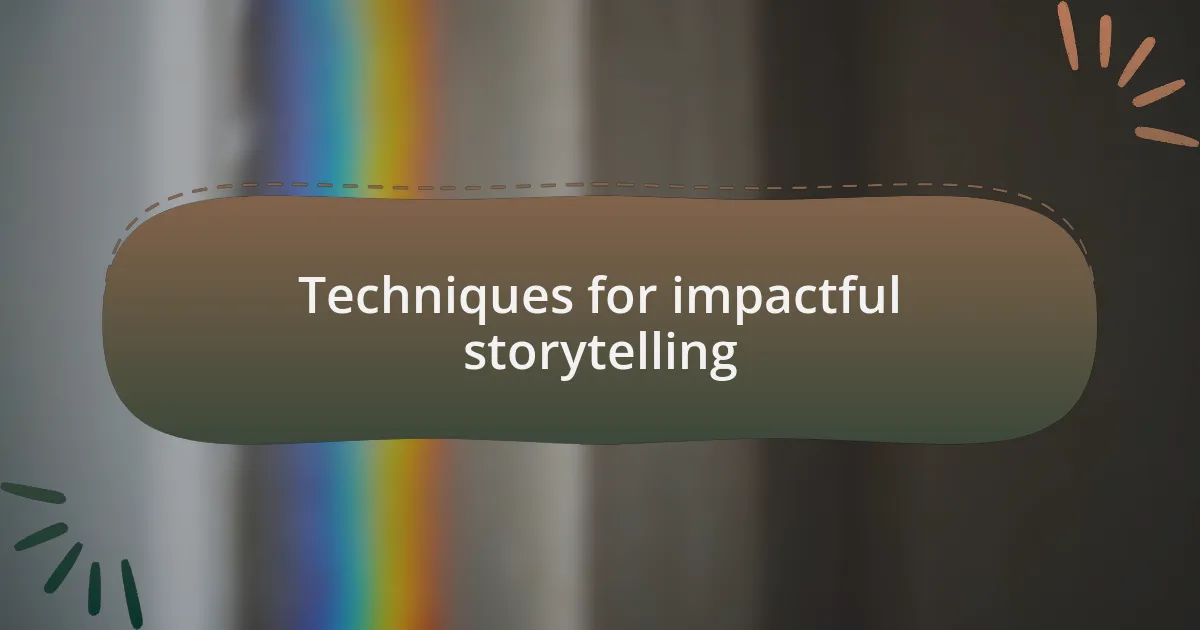
Techniques for impactful storytelling
One powerful technique is to use character-driven storytelling. I recall a workshop where I introduced a young girl, Maria, who dreamed of becoming an engineer in a male-dominated field. While she faced a barrage of challenges, illustrating her aspirations and hurdles made the audience rally behind her. When you give your characters depth, don’t they become more relatable? This connection can inspire action in ways that statistics alone simply can’t achieve.
Another effective approach is creating a sense of urgency in the narrative. In a past initiative focused on gender-based violence, I shared the story of a woman whose critical decision was made in a split second: to speak out or remain silent. I described her fear, but also her courage, which set the stage for real-life implications. Why wait until something tragic happens to take action? By weaving urgency into these tales, I’ve found that it compels audiences to reflect and respond.
Moreover, incorporating diverse perspectives enriches the storytelling experience. At a recent event, I invited a panel of women from various backgrounds to share their experiences of inequality. Each story highlighted different facets of the same issue. When you listen to a chorus of voices, doesn’t it remind you that gender equality is a collective journey? This technique not only broadens understanding but also fosters a sense of community around a shared mission.
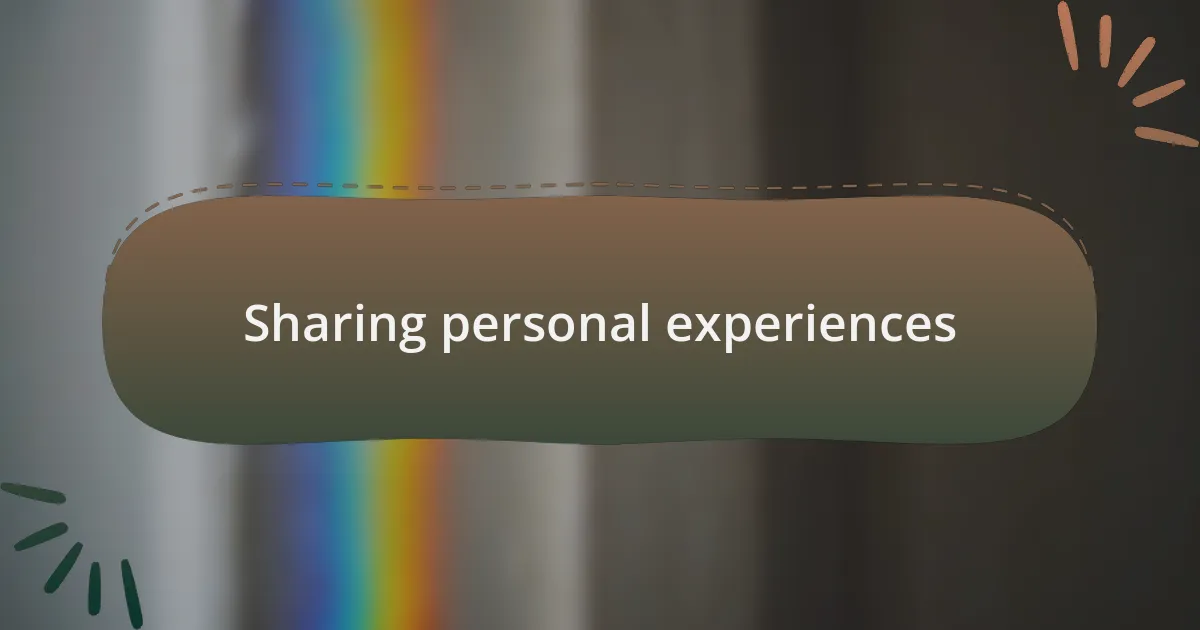
Sharing personal experiences
Sharing personal experiences is a vital strategy in advocacy. I remember when I decided to share my own story about facing discrimination in the workplace. As I recounted moments of doubt and resilience, I could see the audience nodding in understanding. Isn’t it remarkable how our vulnerabilities can create bonds and foster empathy among others?
One evening, during a community gathering, I met a woman named Amina who recounted her journey escaping an oppressive situation. As she described her determination to seek a better life for her children, the room fell silent; you could feel the weight of her experiences. How often do we underestimate the power of one story to illuminate the struggles that many share, yet rarely speak about?
Each personal narrative I’ve encountered has shaped my understanding of gender equality. I often think back to a conversation with a friend who bravely confronted societal expectations in pursuing her dreams. Her narrative was not just inspiring; it was a mirror reflecting the struggles so many face. Why do we often shy away from these discussions when they hold the key to understanding the collective journey toward equality?
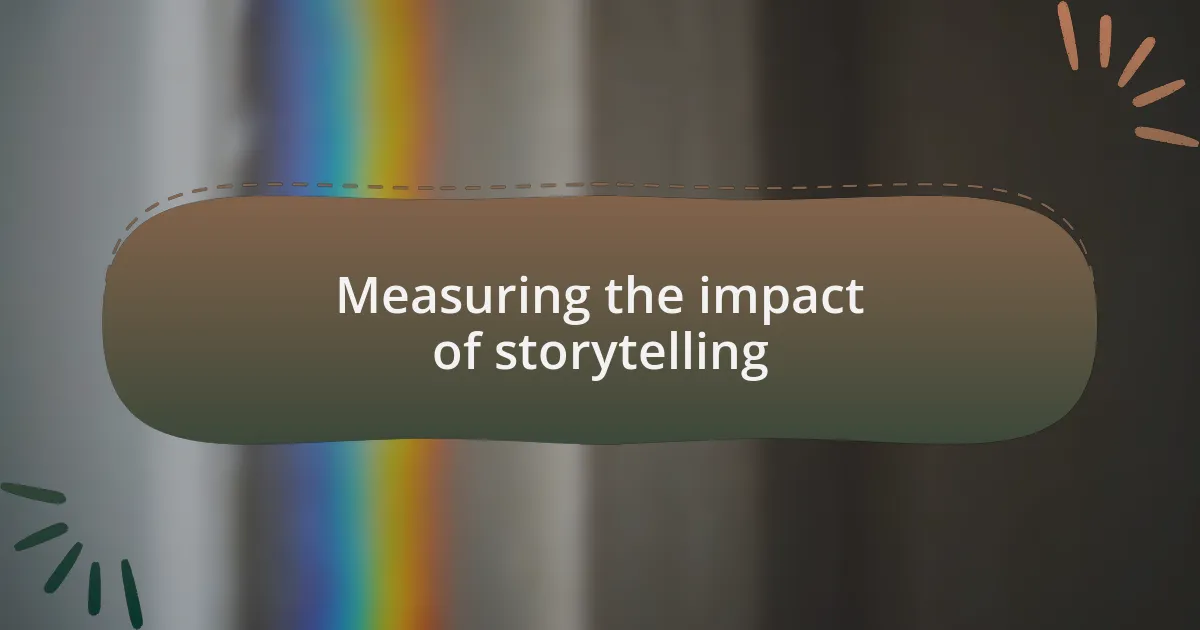
Measuring the impact of storytelling
Measuring the impact of storytelling can be a revealing process. I remember after sharing my story at a gender equality workshop, I conducted a brief survey to gather feedback. The responses were striking; many participants expressed how my experiences encouraged them to reflect on their own situations and consider their roles in advocating for change. It was inspiring to see tangible evidence that personal narratives can spark introspection.
Furthermore, I often find myself analyzing the way stories resonate with audiences. A few months ago, I hosted an online discussion about gender biases in various workplaces. Participants engaged deeply, sharing their own thoughts and stories during the session. I was moved to see not just the participation rate, but the quality of interaction that emerged. Isn’t it fascinating how a single story can lead to a cascade of conversations, revealing layers of shared experiences?
Finally, I’ve also assessed the reach of storytelling through metrics like social media engagement. When I shared a video of a powerful testimony on my platform, the shares and comments poured in, indicating a significant uptick in awareness. I can’t help but wonder—doesn’t the level of engagement reflect a collective desire to connect and advocate for change? In my view, these quantitative measurements, paired with the qualitative reflections, create a compelling case for the enduring impact of storytelling in fostering gender equality.